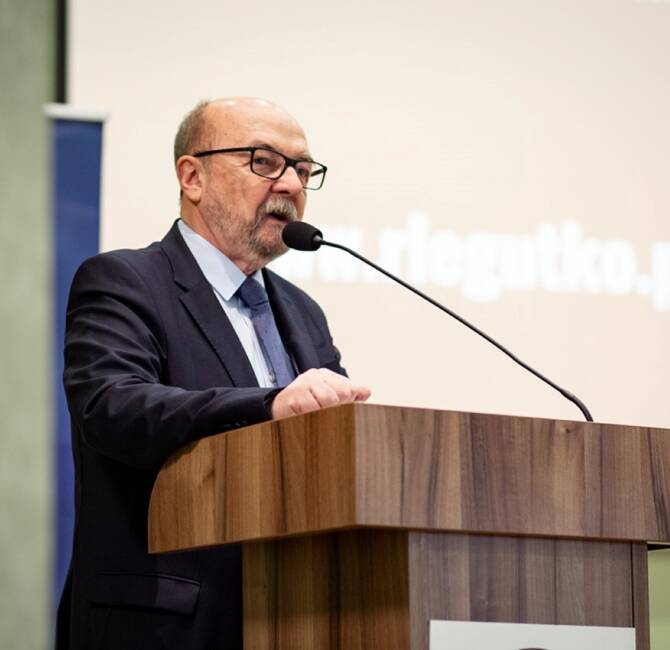This article was published online by the Magyar Nemzet on 11 November 2021.
The time has come to say it out loud: it is necessary to change the spatial structure of the Hungarian economy. The predominantly Budapest-centered policy of the past 150 years is not enough to economically reach or surpass Western Europe, or the successful countries of East Asia and the Middle East.
In fact, without changing the spatial layout, we cannot keep pace with the economic development of our region. The main reason for this is: due to Budapest’s internal, insurmountable constraints and the megatrends of the past decade, the Hungarian capital has shrunk on the global scale while, locally, remaining too large. In other words, while it is too small for the world, it is too big for us.
In the search for a successful and, inherently, sustainable Hungarian model of development, we are in need of a fundamentally different spatial structure.
That, as well as other necessary factors such as: political predictability, equilibrium growth, a balanced central bank budget, EU funds, middle-class expansion, focus on developing manufacturing, competitive higher education, innovative SME sector and renewed healthcare.
Let’s take a look at some starting points for this:
Budapest served as a motor for the first industrialization
Between 1873 and 1918, Budapest successfully replaced the deficient Hungarian spatial structure that had been in existence for hundreds of years. Budapest managed to accelerate industrialization, infrastructure development, civilization and modernization for the Hungarian half of the Monarchy as its engine. This was achieved by a radial, railway-based configuration directly or indirectly connecting all the settlements of the Carpathian Basin to the core, Budapest.
This was a highly centralized layout that at the time, effectively balanced out the decentralized network of large cities in the Carpathian Basin. Košice, Bratislava, Rijeka, Novi Sad, Subotica, Timișoara, Cluj-Napoca, Brasov, Alba Iulia, Odorheiu Secuiesc, Oradea, Berehove, and Mukachevo formed a network of cities that complemented Budapest; this network even worked to balance out the centralized nature. However, this network of cities was destroyed by the Treaty of Trianon. After 1920, Hungarian economic development was deprived of its former network of infrastructure, raw materials, markets, labor force, university, and secondary school knowledge along with the vast majority of factories. The spatial structure of Hungarian development established in 1867 ceased to exist in 1920 as the unified economic space of the Carpathian Basin was broken apart.
Budapest central role grows from 1920 to 1990
The new Hungarian spatial structure survived after Trianon for 70 years.
Budapest retained, and even increased its central role, but the new metropolitan network along the border lines was not enough to offset Budapest’s centrality. As a result of the consequentially forced but needed development policy, the cities of Pécs, Szeged, Debrecen, Miskolc, Esztergom, Győr, Szombathely, and Sopron developed at a much faster rate between 1920 and 1945; however, these cities could not replace the former metropolitan network of the Carpathian Basin. In preparation for the war, a new urban triangular network was formed by the cities of Veszprém, Győr and Székesfehérvár supplemented by Zala’s oil industry in the south; but these were not enough to alleviate the Budapest-centric system either. Even still, by 1936, Hungary had achieved the best development rates so far compared to the rest of the EU countries at 83 percent (the rate in 2020 was 74 percent); this was largely due to the dynamic growth of the new urban network within the new borders of Hungary.
Later, more cities were included in the network configuration with the multiple waves of industrialization following 1945: Diósgyőr, Dunaújváros, Százhalombatta, Tatabánya, Paks. But these could not break the Budapest-centric system either. The era’s lack of a market economy and democracy was in itself incompatible with economic development – Hungarian rates in 1990 reached only 57% of the EU average; Budapest’s growth inhibited the development of the network. The planned economy and dictatorship built a large state with a strong Budapest at the center that became the “bloated” head and burden of the economy.
The transitional spatial structure of the decades of transition
During the period of transition – the 20 years between 1990 and 2010 – though Budapest continued to prevail as the center of the economy, other compensatory changes were initiated. For example: municipalities received their own separate funds, FDI greenfield investments landed along highways outside the capital, the economic importance of universities outside Budapest grew, and the “banana” formation of Győr–Budapest–Kecskemét was established (to quote Zoltán Cséfalvay). However, all of this was still not enough to balance out the Budapest-centric system. Thus, in addition to errors in economic policy, the “out of balance” spatial structure is the decisive but hidden reason for our low 9 percent gain in development toward the EU average (from 57 percent to 66) in the past 20 years.
From a single radius to a network of urban centers
In 2010, Hungary began a new phase of development that will foreseeably last until 2030. After restoring financial balances and a turnaround in growth, we reached 73 percent of the EU average in the years from 2010-2019 – the best performing decade in the 100 years since Trianon. We could have achieved even better results if the growth rate after rebalancing would be complemented by a turnaround in competitiveness (around 86% of the EU average, just 8% behind the Czechs). The competitiveness turnaround is our task for the next decade.
However, there is another hidden reason why we could not make better use of the exceptional opportunities of the 2010-2019 decade: the spatial stalemate. Even though the political, government, and even business sectors are aware the regions outside Budapest are the true sustainable source of Hungarian development, not much action has been taken towards achieving this. Perhaps the last remnant of the dictatorship and planned economy from 1949 to 1989 was the burden of our capital on our country.
But the economic and financial indicators are continuously showing that a change must be made in this structure. The vast majority of foreign manufacturing investments are landing outside Budapest; thus foreign direct investments favor development outside the capital. Most dynamic small and medium enterprises with exports are developing outside Budapest. Another central city, Debrecen, and the rise of dynamic cities – Győr, Kecskemét, Gödöllő, Veszprém, Székesfehérvár, Nyíregyháza, Zalaegerszeg – indicate that decentralized city networks are the path to success.
Meanwhile, Budapest is showing signs that it cannot keep up as the motor of economic development. The capital was not capable of creating an attractive startup environment; it did not garner quality tourism. It did not become Europe’s health center. With the exception of a few universities (Semmelweis, ELTE, BME) it did not become a European educational center. Budapest has not become a smart city nor was it able to renew its property stock at the value of a European capital.
At the same time, Budapest is also presenting what it can deliver for the path to progress. Our capital is an attractive cultural center; thus, it is worth investing in anything related to cultural programs. It has a strong presence as a tourist hotspot so quality tourism should be pursued. It is a center for higher and secondary education; therefore, further strengthening universities and high schools could be a breakthrough. Budapest could still be a part of a European, regional health center and even become a smart city.
However, sustainable Hungarian economic development can no longer rely on Budapest as its focal point. In order to alter this spatial layout, it is worthwhile to: further develop border towns that have grown since 1920, construct a unified economic space in the Carpathian Basin, accelerate development in Hungarian mid-level cities, strengthen and connect the “horseshoe” or “bearing” (to quote Norbert Csizmadia) of cities surrounding Budapest, and invest in the infrastructure of the “circular” transport system encircling Budapest.
P.S.
“The aim of a network is for each node to be able to be the center of the whole” – 21 st century fundamental
György Matolcsy
President of the Hungarian National Bank




